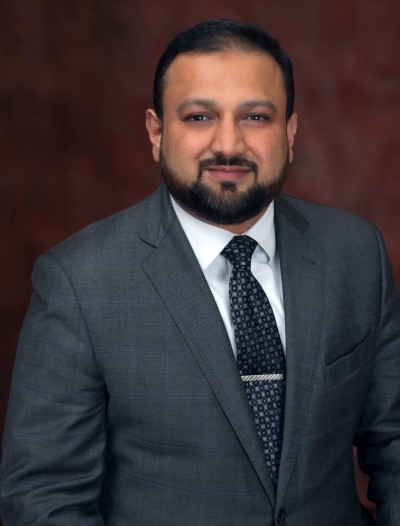Blessing Health calms anxious COVID-19 patients with RPM tech

Blessing Health System's Moorman Pavilion
Blessing Health System, based in Quincy, Illinois, was facing a two-pronged challenge.
THE PROBLEM
First, patients with COVID-19 who get hospitalized have an increased level of anxiety and stress related to this diagnosis. Second, once discharged, they are limited in their interactions with family and healthcare providers.
Blessing Health was looking at ways it could provide these patients with a true human connection with their care team, in a safe environment, while monitoring the physiological as well as subjective parameters during their recovery.
PROPOSAL
Blessing Health turned to telehealth and remote patient monitoring technology vendor CloudDX for a solution. The vendor's technology had the ability to provide patients a safe environment, while getting medical staff the physiological and subjective data they need to be able to continue assisting in patients' recovery, said Dr. Irshad Siddiqui, executive vice president and chief of IT and innovation at Blessing Health System.
"The survey tools and patient-reported outcomes are important for us to assess how their recovery is progressing," he explained. "Vital signs, like blood pressure, pulse oximetry and temperature, several times a day, with the surveys and questionnaires, can help us build a 360-degree view of our patients' recovery process."
"This is a human-centered design project, so our main success metric is subjective – to maintain the true human connection with our patients at a time when they need us more than ever, as measured by survey tools provided by the technology."
Dr. Irshad Siddiqui, Blessing Health System
The telemedicine kit is plug and play, he added, connecting seamlessly to the peripherals. Further, the kit operates in what is called kiosk mode, so it performs only the intended functions. Therefore, it is an easier experience for a patient who is not tech-savvy, he said.
"We also have control from a device-management perspective to select our own cellular provider, given the lack of broadband in our rural geographical setting," he noted. "Lastly, being able to initiate a video visit easily is an added advantage."
MARKETPLACE
There are many vendors of telemedicine technology and services on the health IT market today. Healthcare IT News recently compiled a comprehensive list of these vendors, with detailed descriptions. To read this special report, click here.
MEETING THE CHALLENGE
The technology is being deployed to patients with mild to moderate COVID-19 illness who were discharged from the hospital after an initial treatment. The treatment may include steroids, Remdesivir and oxygen therapy.
"Once they meet discharge criteria, our team transitions them to their home with the CloudDX kit and starts monitoring them, after some training," Siddiqui explained. "Patients are instructed to log their vitals and complete surveys throughout the day. Depending on their condition, they get frequent check-ins with our care team."
If certain parameters are out of range, the care team gets alerted and reaches out to the patient. The program also addresses prognostic indicators via lab collection at home.
"Our main innovation was a COVID Action Plan," Siddiqui stated. "This is a tool given to the patient that tells them exactly what to do if their symptoms or physiologic parameters change. This eliminates a lot of confusion for the patient, which was an important emotion for us to address in our journey-mapping exercise."
In terms of systems integration, Blessing Health has an integration with its billing systems. However, it has not yet integrated this tool with its electronic health record from a provider-facing side, or with the patient portal from a patient-facing side. But it plans to make these integrations soon as it expands the remote patient-monitoring program for improving chronic care management.
RESULTS
Blessing Health has just started rolling out this program more broadly, so it does not have metrics to share just yet. Siddiqui can share that the feedback regarding the experience from patients and care teams has been very positive.
"I also can speak to our goals," he noted. "This is a human-centered design project, so our main success metric is subjective – to maintain the true human connection with our patients at a time when they need us more than ever, as measured by survey tools provided by the technology. Also, we will be looking at COVID-19 length of stay and readmissions."
Adoption of new care models and newer technologies by providers is important for success. Therefore, Blessing Health intends to measure stakeholder feedback and satisfaction with this project as well. As a future area of focus, Blessing Health is gathering data on COVID-19 long-haulers.
ADVICE FOR OTHERS
"As a disease, COVID-19 is new to us," Siddiqui noted. "The care plans during hospital stay and post-discharge are constantly changing with new evidence and best practices emerging. The biggest advice to organizations considering using a similar technology is to have a good consensus-generation mechanism with care providers."
Further, use a human-centered approach to build a program, as one size does not fit all, he added.
"Also, consider your organization's technology stack. You may have vendors already that can assist you in this space," he concluded.
"Finally, ensure your risk appetite and your organizations' overall risk posture is a consideration before innovating in this space."
Twitter: @SiwickiHealthIT
Email the writer: bsiwicki@himss.org
Healthcare IT News is a HIMSS Media publication.
Healthcare Everywhere, Every Day
The onset of the COVID-19 crisis a year ago, with its widespread quarantines and lockdowns, offered telemedicine its moment to shine after years of under-fulfilled promise. As states look toward a post-pandemic world it's time to build on that promise.

























